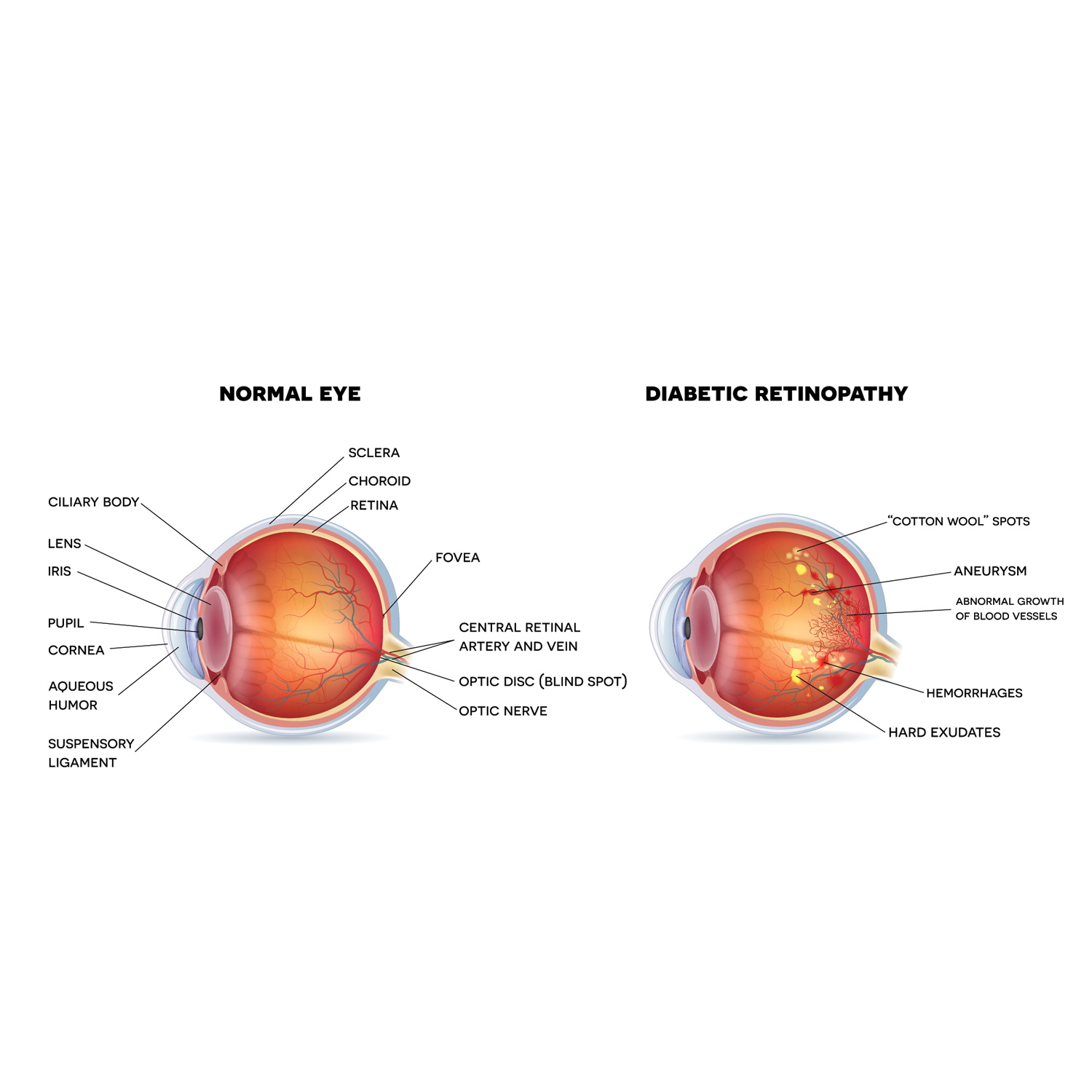Dry Eye
Dry eye is a common condition that affects millions of Americans every year. It tends to be chronic and results from an incomplete tear film covering the surface of the eye. This occurs when your eyes do not produce enough tears or the tears evaporate too quickly. Symptoms of dry eye include blurry vision, fluctuation vision that often clears with a blink, tearing, itchiness, burning, discomfort, redness, light sensitivity and eye fatigue. Dry eye can be caused by a variety of reasons: allergies, dry air, environment, prolonged computer use, exposure to smoke, medications, contact lens wear and some medical conditions. Treatment initially includes over the counter moisturizing drops and can progress to other treatment options such as prescription medications like Restasis or Xiidra or punctal plugs. Having a comprehensive eye exam and discussing your symptoms, lifestyle and medical history can help determine what is causing your dry eye and determine the best course of action.
Blepharitis
Blepharitis is a common chronic condition that causes inflammation of the eyelids. Blepharitis can lead to the formation of a stye or chalazion and dry eyes. Treatment involves keeping the lids clean and free of crusting. Warm compresses should be applied to the lid to loosen crusting, followed by gentle scrubbing of the outer edge of the eyelid/eyelashes with a mixture of water and baby shampoo. Because blepharitis is usually chronic, most patients must maintain an eyelid hygiene routine for life. If the blepharitis is severe, an eye care professional may also prescribe antibiotics or steroid eyedrops.
Macular Degeneration
Macular degeneration, also known as Age-Related Macular Degeneration (AMD), is a common disease that affects older adults. There are two forms of macular degeneration, the “dry” (atrophic) type which accounts for 85-90% of cases and the “wet” (exudative) type which accounts for 10-15% of cases. The macula is the part of the retina that is responsible for our crisp, detailed central vision which controls our ability to read, drive, see objects in find detail and recognize colors. Macular degeneration occurs when cellular waste products are deposited within the retina causing the cells of the macula to deteriorate. This eventually leads to blurry/distorted vision or missing central spots of vision. Dry macular degeneration progresses to wet macular degeneration when new blood vessels grow under the macula and leak fluid. This can quickly blur your vision and cause straight lines to appear crooked or wavy. Regular eye exams and using an amsler grid is recommended to help with prevention, early detection and treatment. Risk factors macular degeneration include increased age, Caucasian race, female, smoking, family history and UV exposure. A healthy diet of green leafy vegetables, UV protection and avoiding smoking can be beneficial to help prevent macular degeneration.
Diabetic Retinopathy
Diabetes is a disease that can affect many organs in the body including the eyes (diabetic retinopathy). The risk of developing diabetic retinopathy is impacted by the length of time a person has diabetes and how well blood sugar levels are controlled. Diabetic retinopathy damages the blood vessels in the retina, which can lead to blood or fluid leaking into the retina. This leakage will harm the retina and increase the risk of permanent loss of vision if left untreated. In the early stages of diabetic retinopathy, patients are often asymptomatic. As retinopathy progresses, symptoms like blurry vision, dark spots or loss of vision may occur. In advanced diabetic retinopathy, people may develop additional vision threatening complications such as retinal detachment or glaucoma. People with diabetes also have an increased risk of developing cataracts, especially if blood sugar levels are not well controlled. It is important for diabetic patients to have dilated eye exams at least once a year, possibly more often depending on the extent of their diabetic retinopathy.
Floaters
Floaters appear as little dark spots, specks or squiggly lines that appear in your vision. They move around independently of eye movement and seem to vanish if you try to look directly at them. Floaters are typically a normal part of the aging process and are harmless and will often settle out of your vision. However, sometimes floaters, especially if new, can be an indication of a more serious condition, such as a retinal tear or retinal detachment. If you experience a sudden increase in floaters, flashing lights, black curtain covering your vision or other sudden vision loss, you should contact your eye care provider immediately.
Stye/Chalazion
A stye (also called a hordeolum) is an infection of an oil gland in the eyelid. A stye causes a swollen, red and painful bump on the edge of the eyelid. A chalazion, is a non-infectious, slow growing, painless bump that forms from blockage of an oil gland in the eyelid. Risk factors for developing a stye or chalazion include chronic blepharitis and rosacea. Most styes and chalazions respond very well to warm compresses and lid hygiene. Lid hygiene is performed by using a gentle facial cleanser to gently “scrub” the edge of the eyelid daily. Warm compresses can be performed by applying a warm gel pack (heated in the microwave) to the affected area for 10-15 minutes. Caution must be used to ensure that the gel pack is warm but not too hot as this could burn the skin of the eyelid. In some cases, oral antibiotics, steroid injections or surgical excision may be necessary.
Presbyopia
The crystalline lens inside our eyes changes over time as a part of the normal aging process. Our lens is responsible for helping bring images into focus at various distances. Over time, the lens loses its flexibility and hardens which makes it more difficult for us focus on objects or text within an arms length. This difficulty of seeing at near, called presbyopia, usually begins around the age of 40 and progressively worsens over time. Symptoms of presbyopia include blurred vision with near objects or small print, tired eyes, eye strain and difficulty switching between near and far vision. Reading glasses, bifocals, contact lenses and increasing the amount of light are ways to improve vision affected by presbyopia.
Pterygium
A pterygium is a fleshy growth of tissue on the cornea. It is often raised from the surface and can contain visible blood vessels. Though usually painless they can become irritated and inflamed. The cause for this condition is unknown but since they are more common in people who live in sunny climates, it is thought that ultraviolet light may be a risk factor. If the pterygium is enlarging or causing discomfort, surgery may be required. It is important for patients with pterygium to have an eye exam annually to monitor its growth and eye health.
Conjunctivitis
Conjunctivitis is an inflammation of the outer layer of the skin of the eyeball called conjunctiva. There are many causes of conjunctivitis, such as an infection with a virus or bacteria, allergies or contact lens wear. “Pink eye” is a conjunctivitis caused by the same virus that causes the common cold. Typically, someone that has pink eye will have a history of having a cold in the recent past and will develop a red eye in one eye and later develop a red eye in the other eye. Like the common cold, this type of conjunctivitis is very contagious, but usually will clear up on its own within several days without medical treatment. Allergic conjunctivitis can be seasonal (caused by pollen) or flare up year round (from dust, pet dander). Conjunctivitis caused by contact lenses is seen in soft contact lens wearers and may indicate possible soft contact lens intolerance.



